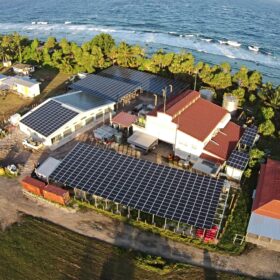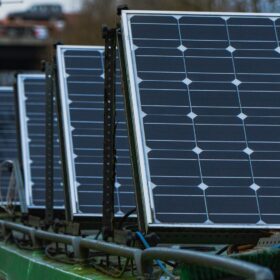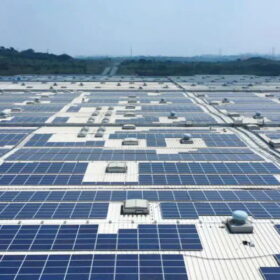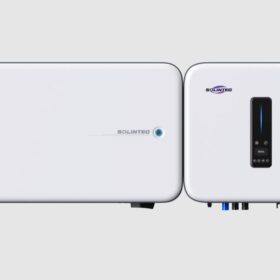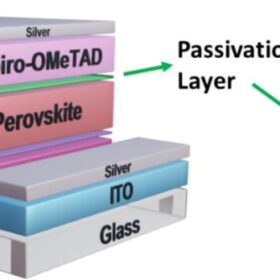500 kW solar and 2 MWh BESS projects boost Pacific nation’s clean energy goals
The pacific island nation of Tuvalu is on track to achieving its goal of 100% renewables by 2030, with the recent commissioning of a 500 kW rooftop solar project and 2 MWh battery energy storage system in it’s capital Funafuti.
Enphase rolls out software to prevent busbar overload
Enphase Energy has released new software to help homeowners install larger solar and battery systems without major electrical panel upgrades. It uses real-time measurements from current transformers to make immediate decisions.
Anti-soiling coating increases PV panel current in arid regions by 64.7%
Scientists in Egypt have created an anti-soiling coating for solar panels by mixing ethanol, deionized water, ammonium hydroxide and tetraethyl orthosilicate. They tested a coated panel outdoors for ten months and found that the panel showed a 64.7% higher current compared to reference modules without coating.
Research shows tilt angles over 30 degrees delay solar module thermal failures
A Chinese-Italian research team has analysed the influence of different tilt angles on the thermal failure of the photovoltaic facades or roofs in fire conditions, finding that when the tilt angle exceeds 30 degrees, the time to failure increased significantly.
Researchers analyse wind cooling effect for 5.9 MW rooftop PV array
Researchers have analysed how wind speed and direction affect the cooling of a rooftop PV plant with 10,806 panels. They said that winds from behind were less effective due to the roof slope and the minimal gap between the panels and the roof, but wind from other directions could contribute to a cooling effect of up to 7 C.
Solinteg launches new residential solar storage systems
Solinteg has developed the IntegOne HSH, a residential solar storage system that combines a single-phase hybrid inverter with one or two batteries. Up to 10 systems can connect in parallel, offering a maximum efficiency of 97.6%.
Bluetti launches new ESS with up to 154.8kWh of storage
United States-based Bluetti has developed a new energy storage system that offers up to 154.8 kWh of storage and 60 kW of output by connecting up to three systems in parallel. It includes an inverter and a voltage controller with up to seven batteries.
New passivation strategy increases efficiency of chloride-iodide-based perovskite solar cells by 15%
Although local defects in chloride-iodide-based perovskite are hard to avoid due to ion migration, a group of scientists from the University of New South Wales has found a way to passivate them. They used different combinations of 4-chlorobenzylammonium chloride and 4-chlorobenzylammonium bromide on top of the hole transport layer and reached up to 15% improvement in efficiency.
PV Hardware unveils solar tracker
The Spanish company said that its new tracker “is designed for maximum adaptability to any terrain” and is compatible with all PV modules.
Solis introduces low-voltage hybrid inverters
The Chinese manufacturer said that its new series includes inverters with up to 15 kW of AC output. It supports a maximum input current of 20A.
